
Ask a Bolognese to tell you some favorite spots in the city and he or she is likely to include San Luca. By ‘San Luca’ we mean the sanctuary on top of the hill (Basilica di San Luca), but also the covered walkway that leads to it (Portico di San Luca). You’ll find many Bolognesi using the portico, a steady uphill walk, as training ground, walking briskly or running, especially on weekends; others still use it the same way as pilgrims in the past did, reciting the Mysteries of the Rosary (meditations on episodes in the life and death of Jesus), stopping at each of the 15 chapels along the portico.
Walking along the Portico di San Luca to reach the Basilica is a quintessential Bologna experience. Here’s a little background historical info and what you need to know to plan your visit. Also, I lead a walking tour there; details at the bottom of this post.
Portico di San Luca: The Longest Covered Walkway in the World
Beginning at Porta Saragozza, the Portico di San Luca connects the city to the Sanctuary of the Madonna di San Luca on top of the Colle della Guardia hill (289 meters above sea level). The portico is an uninterrupted covered walkway that, in 3.8 km (3,796m to be precise), takes you from the plain to the hills, with a 215 meters elevation gain.
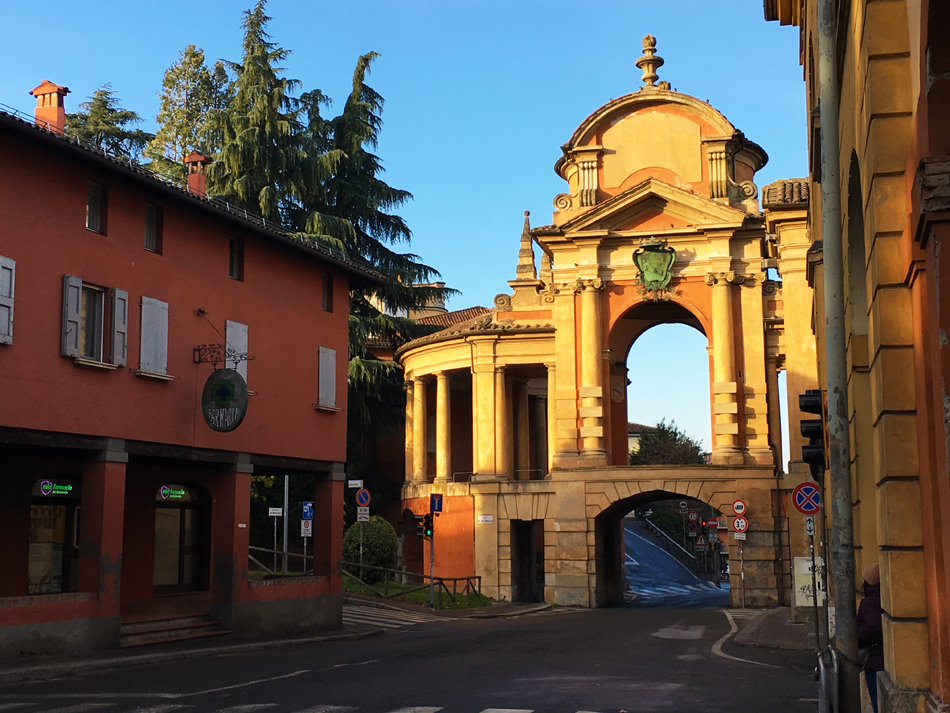
The first part of the portico runs along Via Saragozza, and is flanked by houses, shops, bars and restaurants (but imagine that this was all countryside once). The second part is the uphill stretch, which begins at the Arco del Meloncello, a Baroque overpass that allows people to continue walking along the portico without being hampered by car traffic. The two-kilometer ascent, with a 10% incline, can be demanding, with the last stretch, featuring a long series of steps, the steepest. This is why the Bolognesi also take the walk as a vow – “I promise I’ll walk up to San Luca if I pass the exam!” say university students before a particularly difficult test for example.
As you walk up, you have different viewpoints over Bologna, from the soccer stadium to the Certosa, the city’s monumental cemetery, and, when the portico changes sides, over the historic center (you can even see the Basilica of San Petronio and the Two Towers – but you have to know where to look!) and the Colle dell’Osservanza.
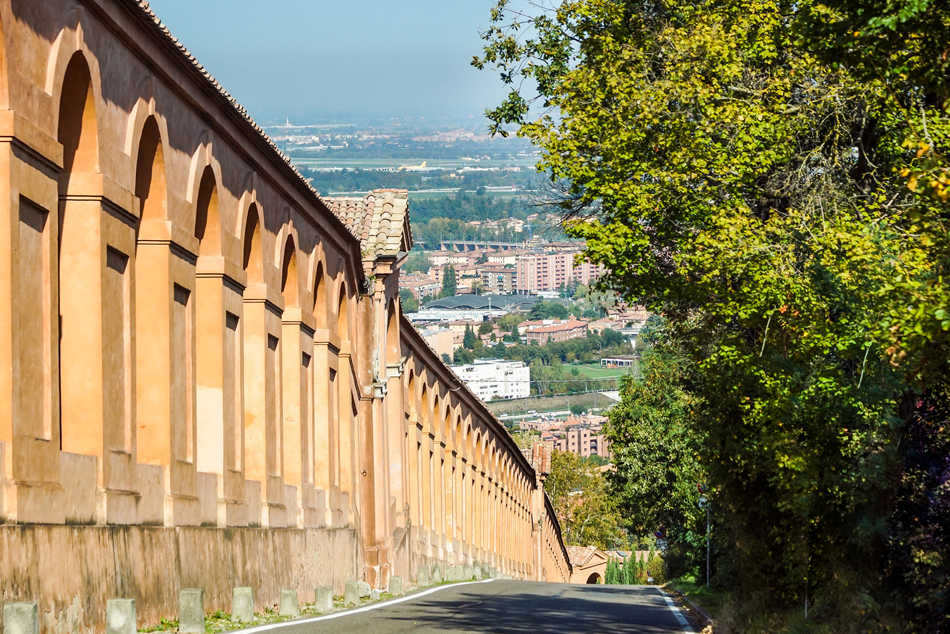
When was the Portico di San Luca built, and why?
Construction of the portico began in 1674, but its backstory goes as far back as 1192, when a young woman from nearby Casalecchio, Angelica de Caicle, founded an hermitage on top of the Colle della Guardia, where the Basilica now stands. After her death, the hermitage became a female monastic community who guarded an image of the Virgin with Child, which was said to have been painted by Luke the Evangelist (hence the name Madonna di San Luca). With time, devotion to the icon grew, and many did the pilgrimage up to see it.
In 1433, the sacred image was brought down into Bologna in the hopes that it would cease the rain that had fallen incessantly for three months, causing extensive damage to the crops and subsequent famine. As soon as the procession carrying the icon reached Porta Saragozza, the rain stopped. It is since then that, every year in May, the image of the Madonna is brought from the Basilica di San Luca down to the Cathedral of San Pietro in the city center, on a canopy carried on the shoulders by members of the Confraternita dei Domenichini dressed as pilgrims, during a solemn and heartfelt procession.

The Bolognesi grew more and more affectionate toward the Madonna di San Luca, and, in 1655, they asked that a portico be constructed to reach the sanctuary where the icon was guarded; it would shelter the Madonna during its annual descent into the city. It was agreed that the portico would be built with private, not public funding. And everyone, from the wealthy to the poor, helped pay for its construction, which took 40 years given the difficulties encountered to build the portion on the hill.
The Sanctuary of the Madonna di San Luca
From the small hermitage place that was first founded in the 12th century, the sanctuary was modified and enlarged through the centuries. The building you see today dates from 1723, a project by Carlo Francesco Dotti, one of the most important architects in the Papal States in the 18th century (the same architect who designed the Arco del Meloncello, where the uphill portion of the portico begins).
If you’ve reached the Sanctuary via the portico, you have to descend into the plaza to get the full frontal view of it (photo below).
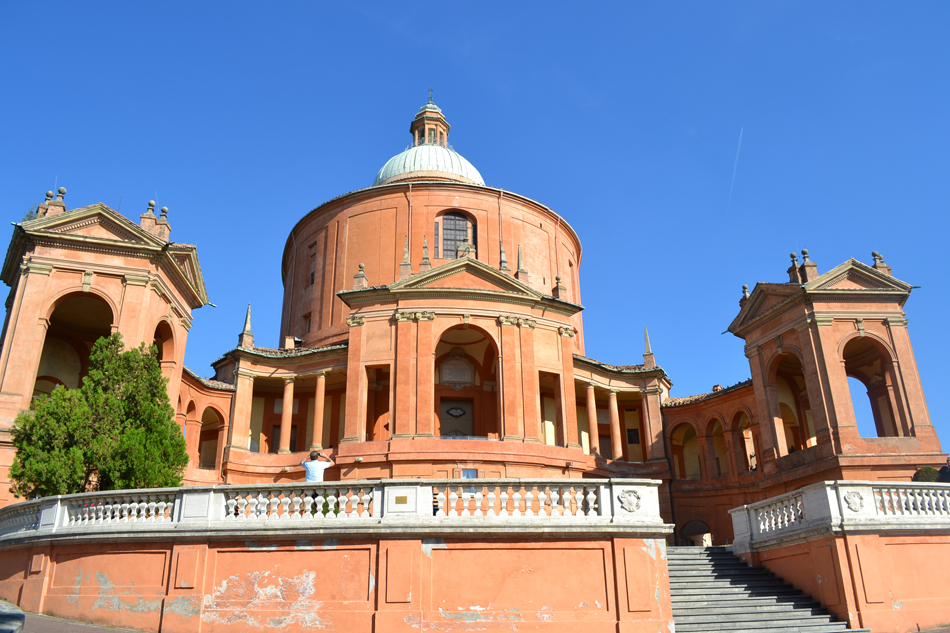
Inside the Basilica, there are numerous works of art, including some by Bolognese artist Guido Reni and Donato Creti. But of course the basilica’s ‘treasure’ is the image of the Virgin with Child, which is at the back of the church, behind the main altar, enclosed by magnificent marbles.
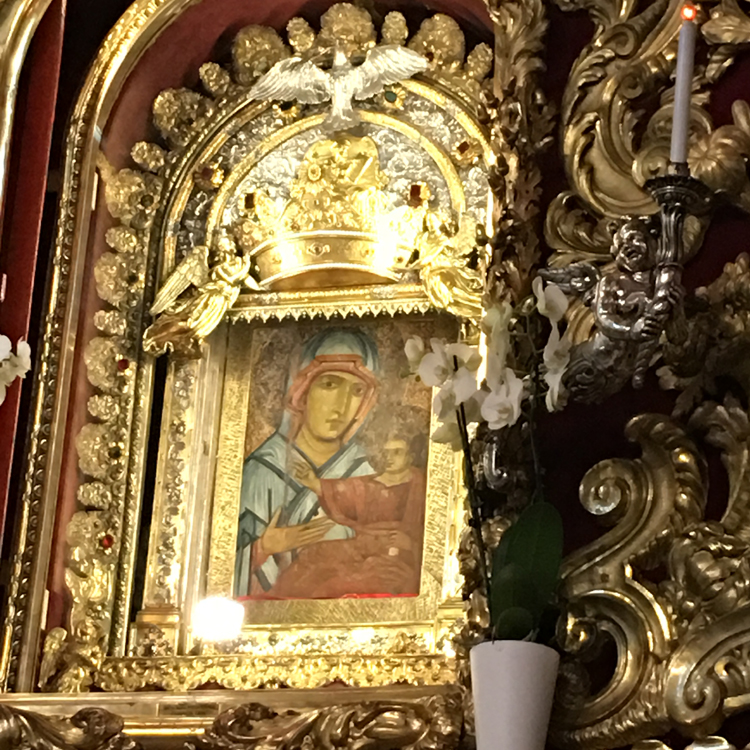
How to reach the Sanctuary
- With me! -On foot- Recommended option 😉 I lead a walking tour up the Portico to the Basilica and beyond, which I call the ‘Welcome to Bologna’ tour. It’s my introduction to the city of Bologna, where I tell you not only about the history of the portico and the Sanctuary of San Luca, the legends associated with them, and point out the views you can’t miss, but I also tell you about the overall history of the portico in Bologna, which is a defining architectural feature of the city. For experienced walkers, I can also offer a longer tour through the hills. Contact me for details: bolognauncovered@gmail.com.
- UPDATE 2024: I accepted a full time position as a tour designer for a U.S. based tour operator that plans custom trips to Italy. This leaves me with very limited time to lead tours, mostly just on weekends. I am not able to accept last minute requests, and it may take me a while to get back to you, so I apologize in advance for my delayed response!

Alternative options are listed below and are considered cheating 😉 Kidding, but really, the best way to reach the Sanctuary is on foot if you don’t mind the uphill walk.
- By bus: You need to take bus 20 from the city center to Villa Spada, and then bus 58 up to the Basilica. You can check the buses timetable here (in Italian).
- By car: You can go up via di San Luca for direct access, or, for a longer route that lets you see part of the hills of San Luca, take via di Casaglia. There’s a parking lot 200 meters from the Basilica.
- By San Luca Express: a tourist train that departs from Piazza Maggiore, goes through parts of the historic center, then reaches the Sanctuary. It includes an audio guide.
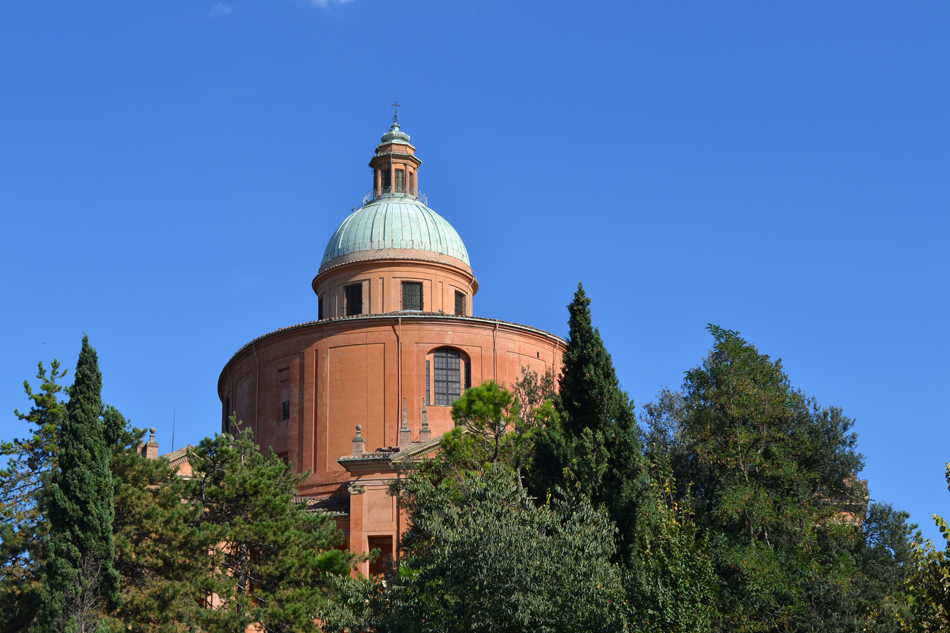


Very exsaustive description of a beautiful walk you can’t miss if you visit Bologna.
I agree, it’s a must-do!
Have done it a few times. If I may say so, it’s a great workout. Congrats again on the guide cert.
Thanks, Jan! I agree it’s a great workout 😉
I’m so looking forward to seeing your beautiful city in July
Hope you’ll have a great time!